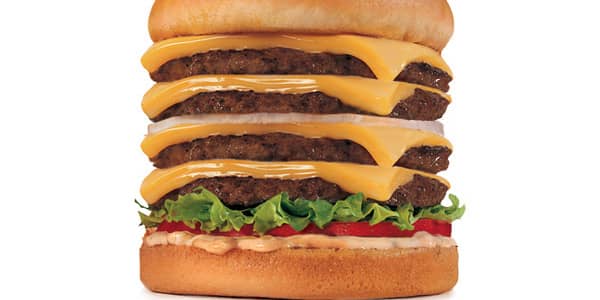“Welcome to Our World of Toys”
The nation’s oldest operating toy store, FAO Schwarz, is turning 150 years old this year. To commemorate this milestone, the company has assembled a collection of more than 20 iconic toys spanning the decades that customers can view at its Fifth Avenue store in New York until April 10.
The toys date to the early years of the 20th century and include a Richard Stieff Teddy Bear. Also on display are the original Barbie and Ken dolls, a prototype of the Etch A Sketch, and seven of the original Hot Wheels cars. Many of the items come from the archives of the toy manufacturers that made them, and some are in their original packaging.
There also are a few glimpses into the history of FAO Schwarz itself. The company’s iconic FAO Schwarz Clock Tower, pictured here, adorned the store from 1986 to 2004, and has returned to mark the occasion, singing out the theme song, “Welcome to Our World of Toys” every five minutes.
A sales ledger from 1909 and a number of the company’s early catalogs are also on display. FAO Schwarz was one of the first retailers to use a mail-order catalog to market its products. It began the practice in 1876, 14 years after its founding during the Civil War.
Please click ahead to see a sample of the historic toys in the collection as well as get a glimpse of a few scenes from around the store.
By Christina Cheddar Berk
Posted 22 February 2012
The Grand Hall
It’s hard to say what is more iconic, the FAO Schwarz’s floor piano, which was made famous in the 1988 Tom Hanks film “Big,” or the toy soldiers that greet customers at the door. For the anniversary, rows of illuminated toy soldiers will line the store’s Grand Hall as customers enter the popular tourist destination.
Over its history, the flagship FAO Schwarz store has been located in several buildings in New York. It moved to its current location near Central Park in 1986.
The retailer went through a period of rapid expansion in the 1990s, and by 2000 operated 42 stores throughout the country. However, the company’s fortunes declined several years later and resulted in two back-to-back bankruptcy filings in 2003. The company survived, but the New York store is currently the only FAO Schwarz store operating today. The brand is now owned by Toys ‘R Us.
Richard Steiff Bear (1905)
Company: Steiff
FAO Schwarz is also well-known for the life-sized stuffed animals it sells. These plush critters fill the Grand Hall. So it seems only fitting that the collection of toys includes a teddy bear from Stieff, one of the world’s oldest designers of stuffed animals.
The gray mohair bear pictured here is a 1905 Richard Steiff Teddy Bear, which was designed by and named after Margarete Steiff’s nephew Richard. This style was produced through 1951, and was a departure from Stieff’s earlier teddies because it had a rounded face, a blunt snout and an embroidered nose.
Candy Land (1955)
Company: Hasbro
Board games like Sorry! and Monopoly have been a childhood staple for decades, and while new variations of these games continue to be introduced, the basic ones endure.
The collection FAO Schwarz has assembled includes a first edition of Sorry!, which was published by Parker Brothers in 1934, and Candy Land, which was created in 1949. A 1935 edition of Monopoly and a 1967 version of Battleship also can be viewed.
This copy of Candy Land shows the game was introduced with color spots and cards. The characters that mark a player’s progress were introduced later.
Silly Putty (1950)
Company: Crayola
Silly Putty is one of those fortunate accidents. It was discovered accidently while researching potential rubber substitutes during World War II. Since 1950, more than 400 million Silly Putty eggs have been sold.
64 Box (1958)
Company: Crayola
Burnt Sienna, periwinkle, or cornflower — which is your favorite? The Crayola 64 Box, with the built-in sharpener, debuted in 1958.
Etch A Sketch (1960)
Company: Ohio Art Co.
Here is a rare glimpse of the prototype Etch A Sketch, which was originally shown at Toy Fair in Nuremburg, Germany, in 1959. Next to it is the first edition of the classic drawing toy, which was introduced in the U.S. the following year.
The toy, which was invented in France in the 1950s by an electrician named André Cassagnes in his basement, was initially rejected by the Ohio Art. But the company reconsidered and began selling it in late 1960. With the help of a television commercial, the toy became a quick success.
Easy-Bake Oven (1964)
Company: Hasbro
Since the Easy-Bake oven was introduced in 1963 by Kenner, millions have been sold. The toy, now owned by Hasbro, first used a light bulb as a heating element, but it has been updated many times over the years and now contains a real heating element.
G.I. Joe (1964)
Company: Hasbro
The collection at FAO Schwarz contains two versions of G.I. Joe, one of the most iconic brands in the history of toys as well as the inspiration for the term “action figure.”
This 12-inch G.I. Joe action figure is a first edition, produced in 1964. Also on display are selections from the first wave of 3 ¾-inch G.I. Joe Real American Heroes action figures from 1982.
This year, Hasbro will be bringing out new G.I. Joe action figures to support the release of the movie “G.I. Joe Retaliation,” which will be in theaters in late June.
Hot Wheels (1968)
Company: Mattel
In 1968, the Hot Wheels brand was introduced as a line of 16 die-cast vehicles in a 1:64 scale. Today, the brand is an enduring classic. More than four billion Hot Wheels cars have been manufactured.
At FAO Schwarz, seven of the original Hot Wheels cars are on display, including custom versions of the T-Bird, Fleetside, Barracuda, Camaro, El Camino, Hot Heap, El Dorado and Ford J-Car.
While most of these were based on cars of the day, others were based on racing cars. The Ford J-Car, for example, was based on a real race car that became known as the Ford GT40 Mk IV and the Hot Heap was based on the Model T roadster known as “Tognotti’s T.”
Playmobil figures (1974)
Company: Playmobil
The first Playmobil figures — a construction worker, a Native American and a knight — made their debut in 1974 and are on display alongside their vintage packaging from 1974 and 1975.
The story that is often told is the 1973 oil crisis helped make the product possible because the German toymaker was looking for products that required less solid plastic.
Now the brand has a large following, including many adult collectors. More than 2.5 billion figures have been sold since the brand was created.
Play-Doh Fuzzy Pumper Barber & Beauty Shop (1977)
Company: Hasbro
The compound in Play-Doh dates to the 1930s when it was used as wallpaper cleaner. But it wasn’t until the mid-1950s that it became known as a modeling compound. It was initially available in only one color — white — and one size.
As the years went by more colors were added, as were playsets. The Play-Doh Fuzzy Pumper Barber & Beauty Shop was introduced in 1977. Barbershops that feature a figure whose “hair”can be extruded and then styled have been popular over the years. This one was so popular a version was reintroduced in 1997.
Cabbage Patch Kids (1982 and 1983)
Company: Original Appalachian Artworks
Cabbage Patch Kids dolls were at the center of one of the biggest toy crazes of the 1980s.
Originally created in 1978 by Xavier Roberts, the dolls were first known as the “Little People.” Pictured here is a doll from the first adoptable, hand-sculpted edition of Original Cabbage Patch Kids, released in 1982, as well as a vinyl-face version, which kicked off the toy frenzy in 1983.
Visitors to the FAO Schwarz gallery can also see the original Barbie and Ken dolls as well as several Hello Kitty items.
Nintendo Entertainment System (1985)
Company: Nintendo
The Nintendo Entertainment System was one of many toys introduced to the U.S. at FAO Schwarz. Others include the Furby and Colorforms.
The NES was an 8-bit videogame console that went on to sell close to 62 million units worldwide and is credited with recreating the home videogame market.
Tickle Me Elmo (1996)
Company: Tyco
The mania over Tickle Me Elmo toys had parents scuffling in the aisle during the 1996 holiday season. The toy was based on the popular “Sesame Street” character and featured his contagious laugh.
FAO Schweetz
One of the most popular parts of the Fifth Avenue store is FAO Schweetz, which sells candy by the pound. The department has been redesigned and expanded to encompass nearly 6,000 square feet of floor space on the first floor of the store.
At one time, in the late 1990s, there were even several standalone FAO Schweetz stores, but they have since been closed.





